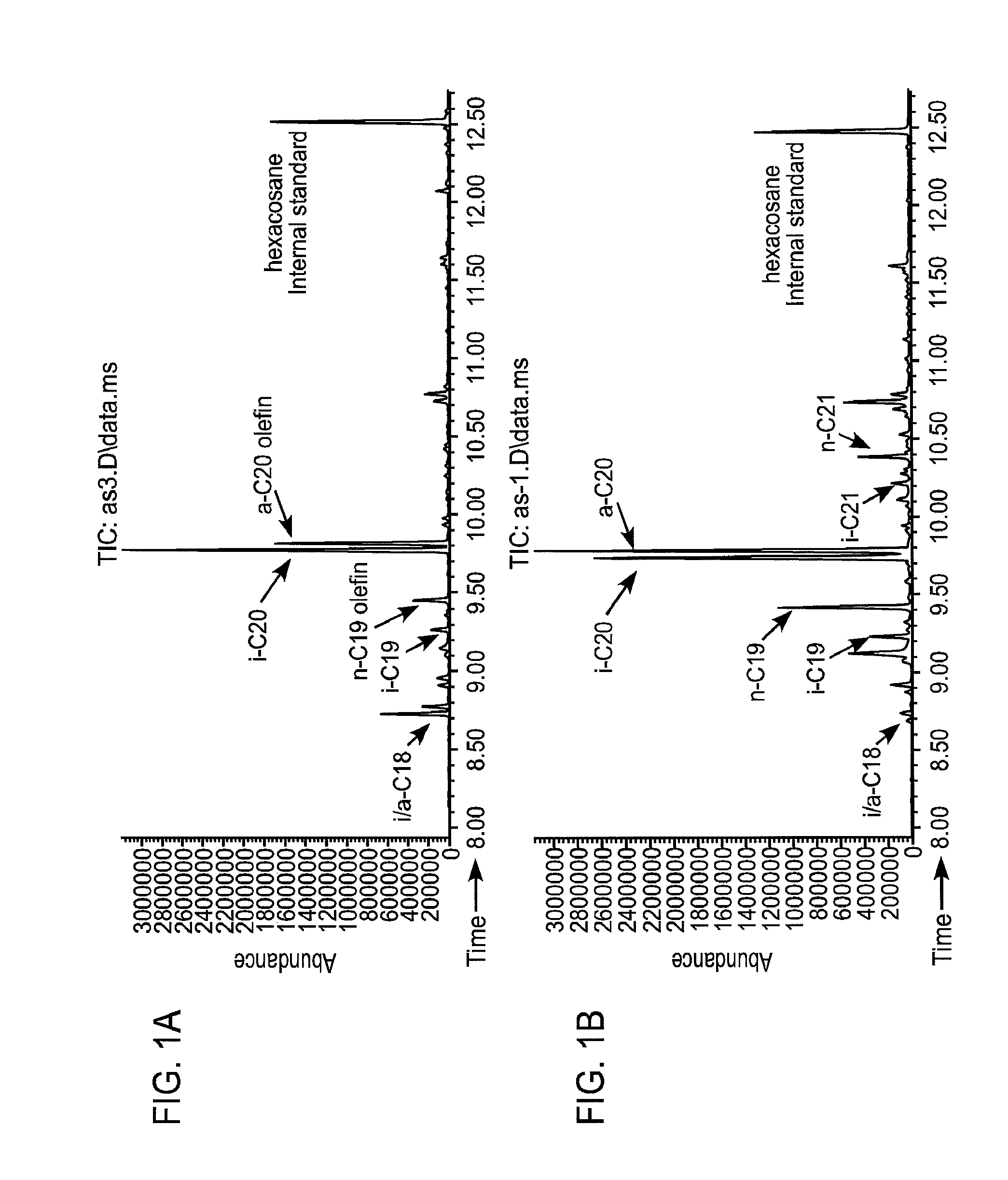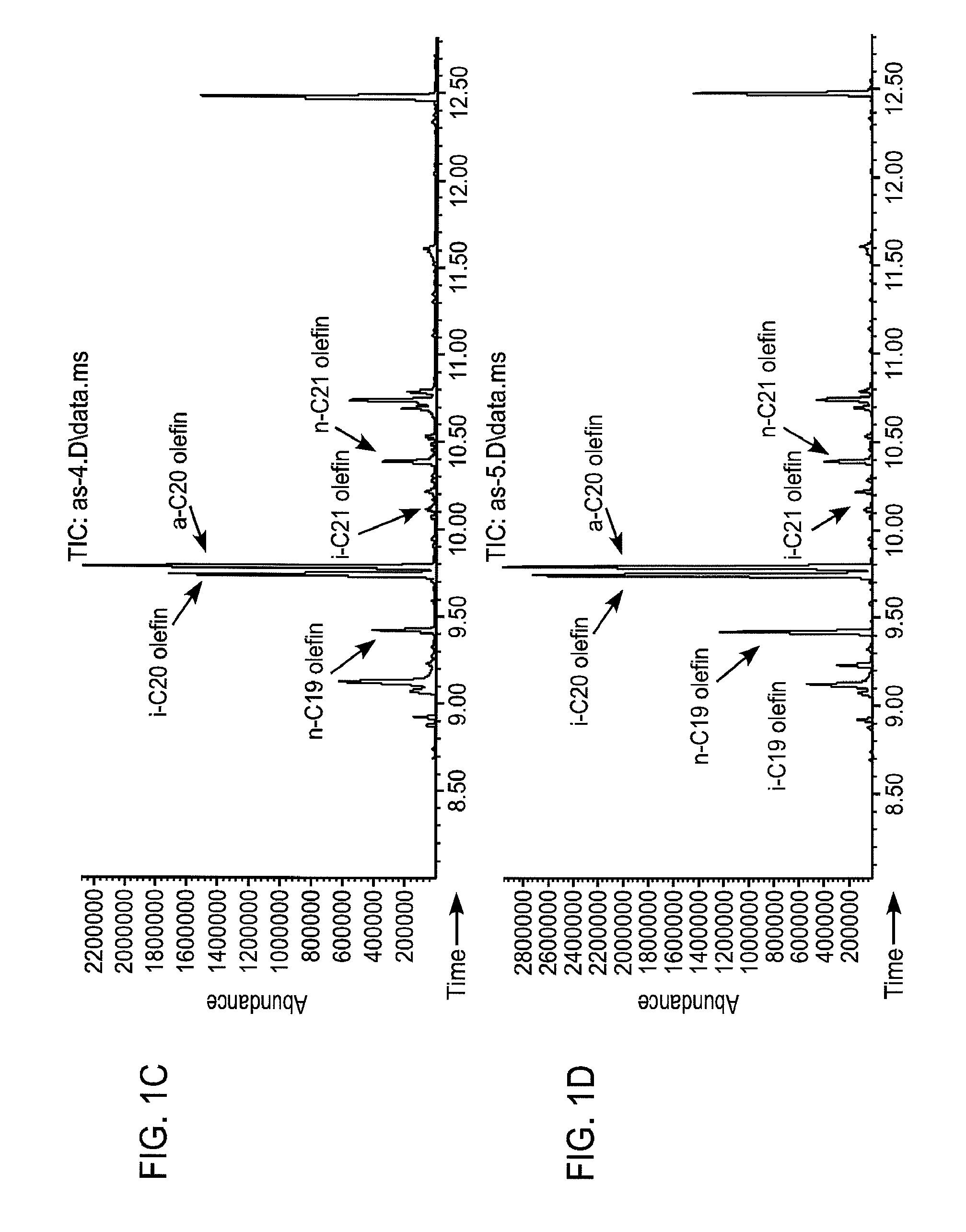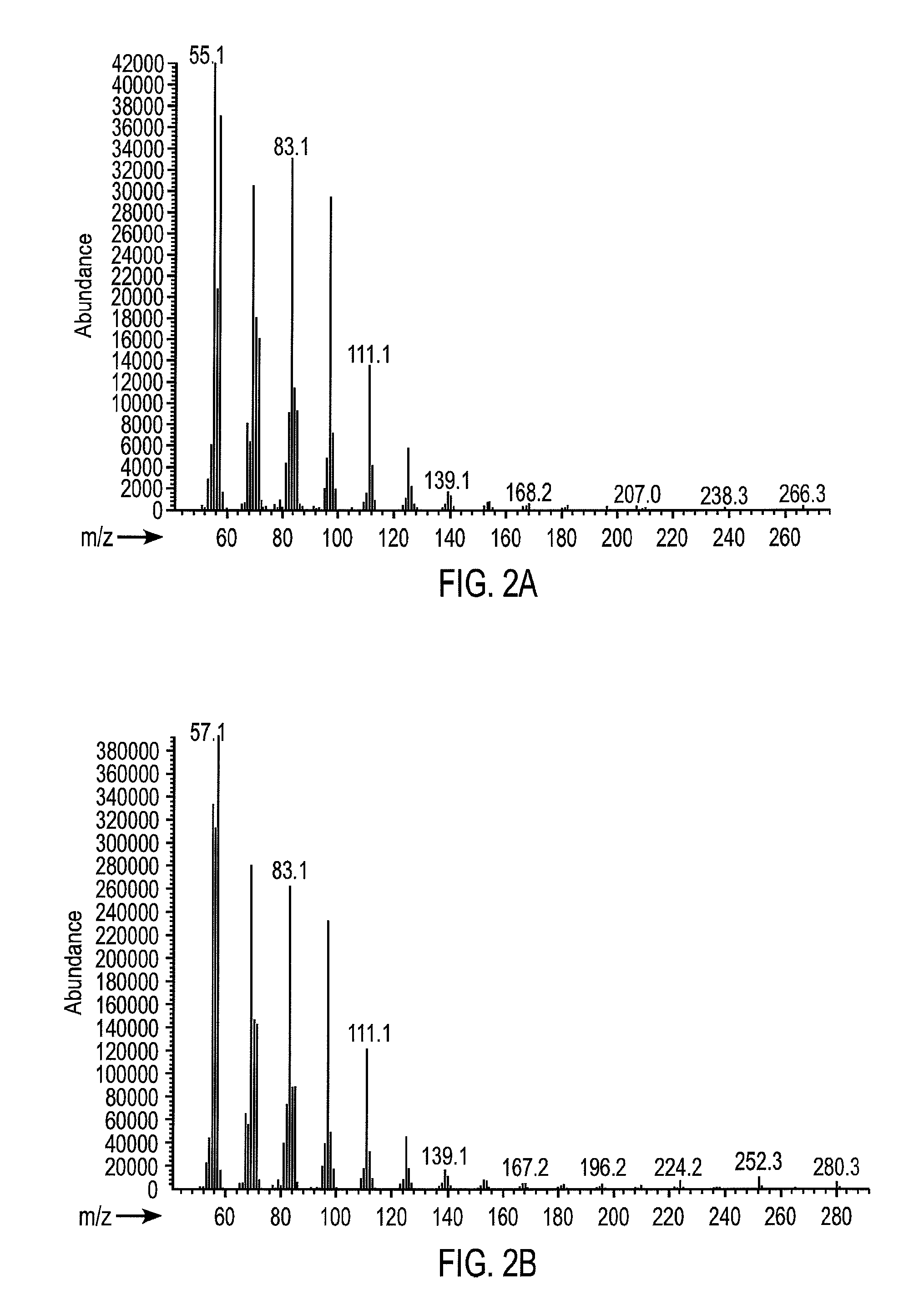Methods and compositions for producing olefins
a technology of olefins and compositions, applied in the field of methods and compositions for producing olefins, can solve the problems of high cost of petroleum products development, high cost, financial and environmental impact, etc., and achieve the effect of facilitating the movement of one or more compounds
- Summary
- Abstract
- Description
- Claims
- Application Information
AI Technical Summary
Benefits of technology
Problems solved by technology
Method used
Image
Examples
example 1
Identification and Reclassification of a Microorganism Belonging to the Genus Jeotgalicoccus that is an α-Olefin Producer
[0265]Micrococcus candicans ATCC 8456 was previously reported to synthesize aliphatic hydrocarbons with carbon chain lengths ranging from C18 to C20 (Morrison et al., J. Bacteriol. 108:353-358, 1971). To identify the hydrocarbons produced by this strain, ATCC 8456 cells were cultured in 15 mL TSBYE medium (3% Tryptic Soy Broth +0.5% Yeast Extract), for 40-48 h at 30° C. Cells from 5 mL of culture were pelleted, resuspended in 1 mL methanol, sonicated for 30 min and extracted with 4 mL hexane. After solvent evaporation, samples were resuspended in 0.1 mL hexane and analyzed by GC-MS. The hydrocarbons were identified as the following α-olefins: 15-methyl-1-heptadecene (a-C18), 16-methyl-1-heptadecene (i-C18), 1-nonadecene (n-C19), 17-methyl-1-nonadecene (a-C20) and 18-methyl-1-nonadecene (i-C20) (i=iso, a=anteiso, n=straight chain) (see, e.g., FIG. 1 and FIG. 2).
[02...
example 2
Production of Increased Levels of Olefins and α-olefins Not Normally Produced by ATCC 8456 Cells Using Fatty Acid Feeding
[0270]The fatty acids eicosanoic acid (straight-chain C20 fatty acid), 16-methyl octadecanoic acid, and 17-methyl octadecanoic acid (branched-chain C19 fatty acids) were identified as components of ATCC 8456's lipids. These fatty acids were deduced to be the direct precursors, after decarboxylation, for 1-nonadecene, 15-methyl-1-heptadecene, and 16-methyl-1-heptadecene biosynthesis, respectively. In order to improve α-olefin production and to produce olefins not normally produced by ATCC 8456 cells, fatty acid feeding experiments were carried out as described below.
[0271]ATCC 8456 cells were grown in 15 mL TSBYE medium (3% Tryptic Soy Broth +0.5% Yeast Extract). Fatty acids were added to the culture medium at final concentrations of 0.5 g / l (0.05%). After growth for 40-48 h at 30° C., cells from 5 mL of culture were pelleted, resuspended in 1 mL methanol, sonicate...
example 3
In Vitro Synthesis of α-Olefins Using Cell Extracts and Partially Purified Proteins
[0274]A cell free extract of ATCC 8456 was used to convert free fatty acids into α-olefins. The cell free extract was generated using the following procedure: ATCC 8456 cells were grown in TSBYE medium (3% Tryptic Soy Broth +0.5% Yeast Extract) at 30° C. for 24 h with shaking. The cells were then pelleted from the culture by centrifuging at 3,700 rpm for 20 min. The cell pellet was then resuspended in 50 mM Tris buffer pH 7.5 with 0.1 M NaCl and 2.0 mM dithiothreitol to a concentration of 0.1 g / mL cells. To this cell slurry, 200 units / mL of lysostaphin (Sigma) were added on ice. The cell lysis reaction was allowed to proceed for 30 min. The cells were then sonicated at 12 W on ice for three cycles of 1.5 sec of sonication followed by 1.5 sec of rest. Sonication lasted for a total of 9 sec. This procedure was repeated 5 times with a 1 min interval between each sonication cycle. The lysed cells were the...
PUM
| Property | Measurement | Unit |
|---|---|---|
| temperature | aaaaa | aaaaa |
| logP | aaaaa | aaaaa |
| pH | aaaaa | aaaaa |
Abstract
Description
Claims
Application Information
 Login to View More
Login to View More - R&D
- Intellectual Property
- Life Sciences
- Materials
- Tech Scout
- Unparalleled Data Quality
- Higher Quality Content
- 60% Fewer Hallucinations
Browse by: Latest US Patents, China's latest patents, Technical Efficacy Thesaurus, Application Domain, Technology Topic, Popular Technical Reports.
© 2025 PatSnap. All rights reserved.Legal|Privacy policy|Modern Slavery Act Transparency Statement|Sitemap|About US| Contact US: help@patsnap.com



